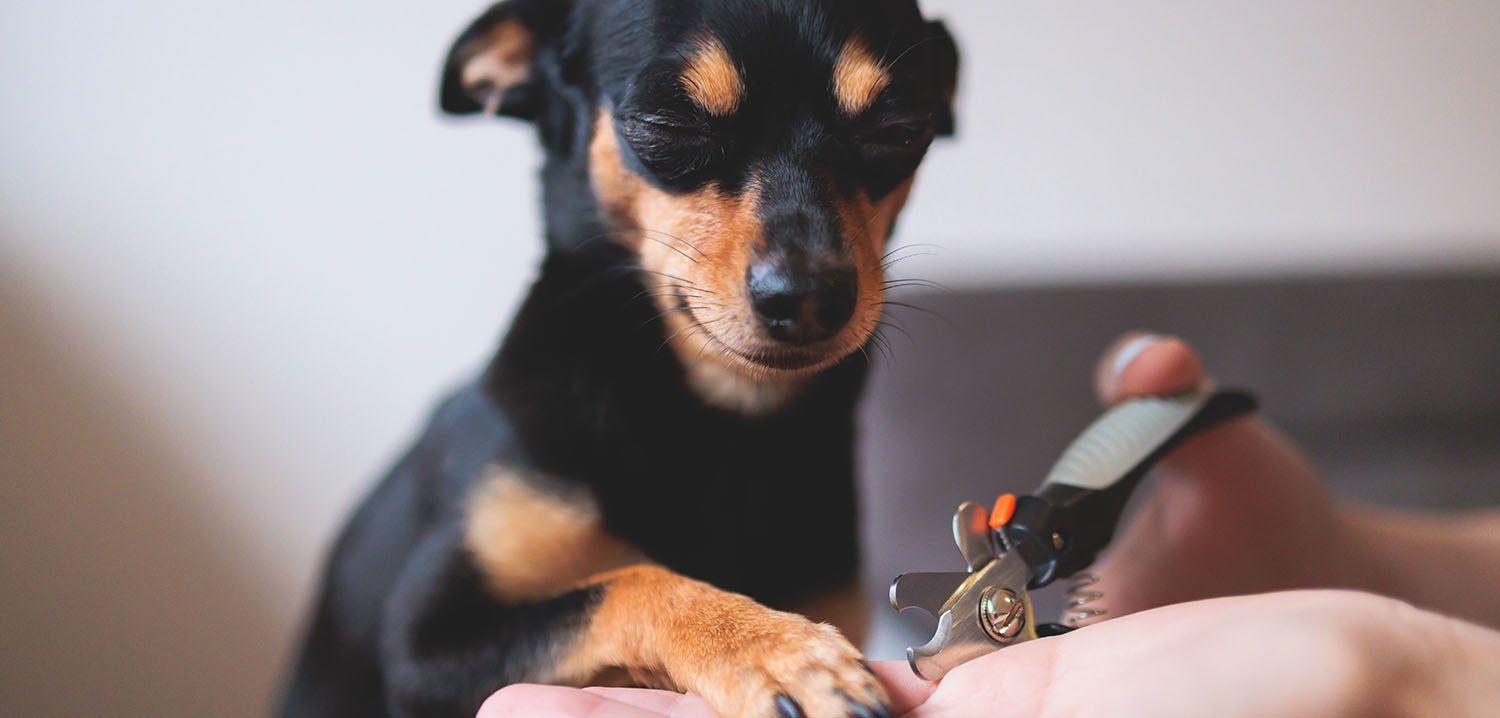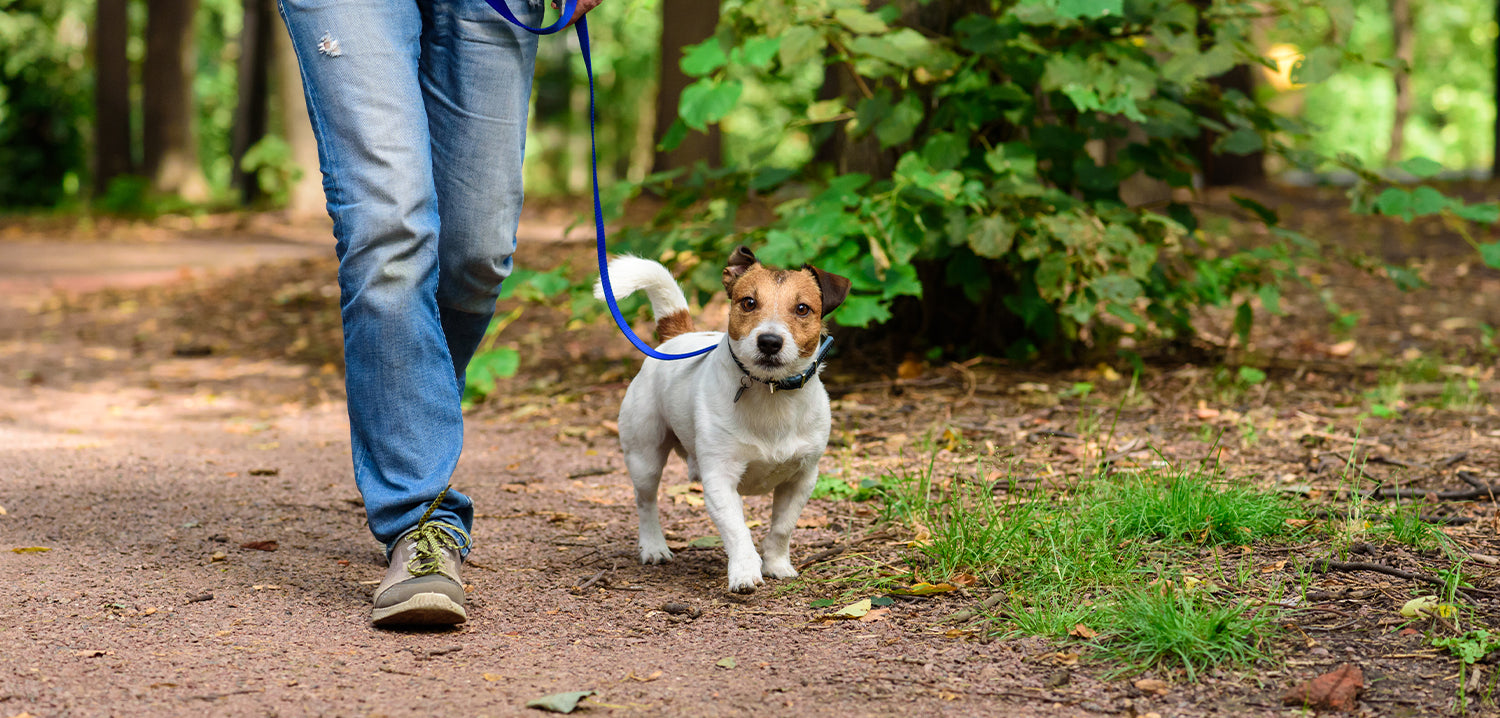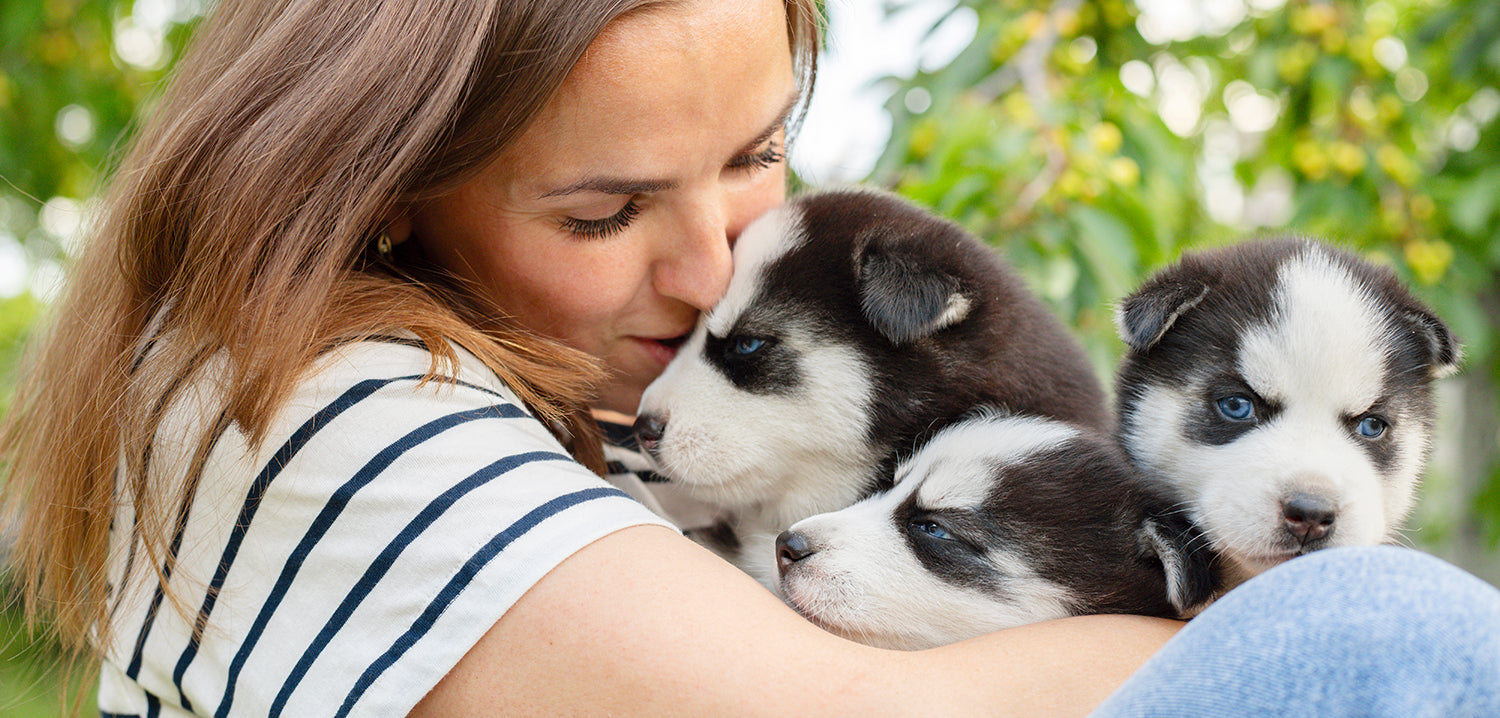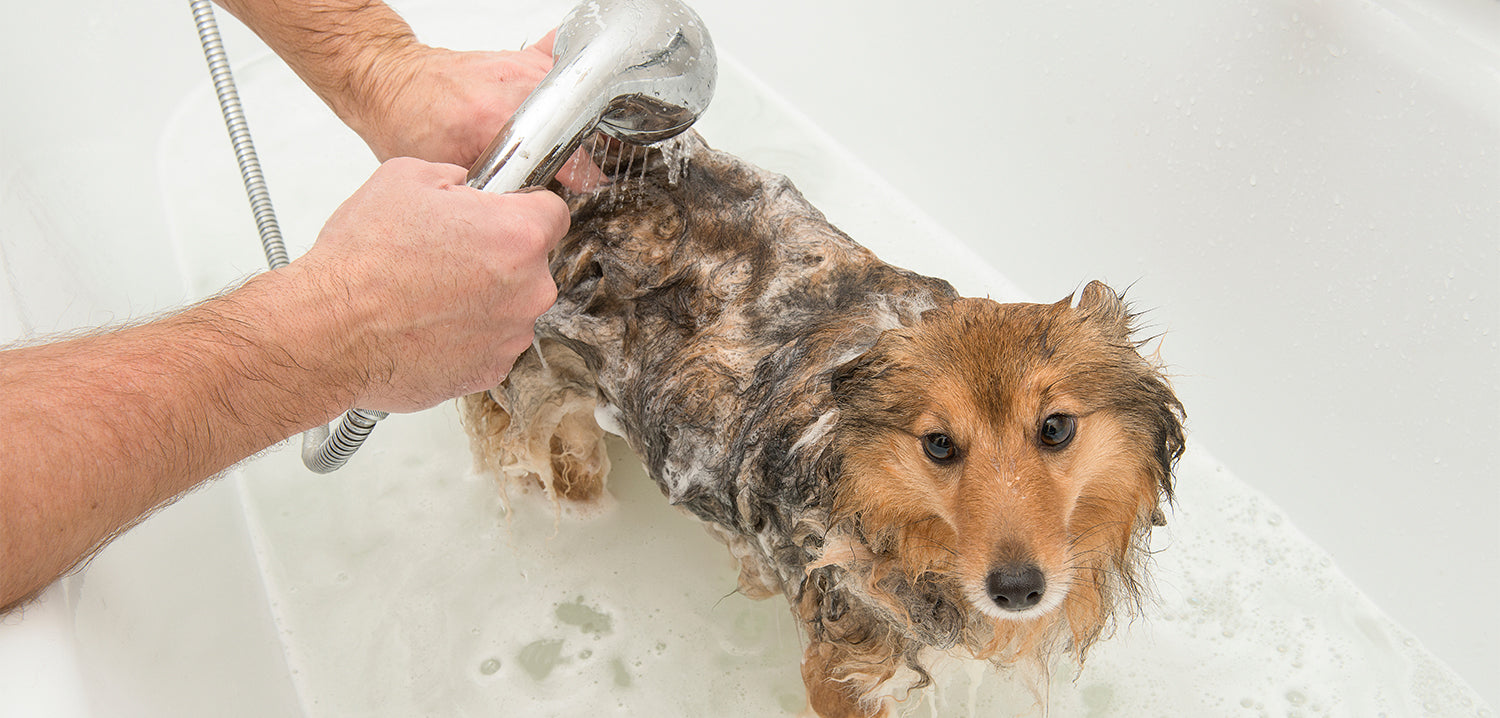Mange in dogs looks like no walk in the park - for dogs or their owners. Dog mange is a skin condition caused by mites that can make your dog scratch like crazy, irritate their skin and cause hair loss. While the condition itself is not serious, it is essential for pet parents to look after their dog’s skin and coat with good hygiene and to seek veterinary help for treatment if they notice any symptoms of dog mange. In this article, we discuss what mange in dogs look like, the symptoms and causes of mange in dogs, and how to treat dog mange effectively. By looking after your dog’s coat, you can support their overall health and keep your furry friend happy, clean and mite-free.
What is dog mange?
Mange is a skin condition in dogs caused by mites. Whilst all dogs can be affected by mange, it is mostly seen in dogs younger than 18 months old. This is because young dogs have weaker immune systems than adult dogs and may be more vulnerable, hence why mange in puppies is more common.
There are two types of dog mange which are caused by different mites. Sarcoptic mange, commonly known as scabies, is caused by the mite Sarcoptes scabiei. With this type, the female mites burrow themselves deep into the skin to lay eggs. These eggs hatch 3 weeks later and the new mites feed on the skin, which can feel itchy and make your dog scratch, causing discomfort.
Demodectic mange, also referred to as red mange or demodex, is caused by the mite Demodex canis. These mites naturally reside in your dog’s hair follicles without any issue, and a healthy dog’s immune system can manage their presence. However, they can become excessive in dogs with weakened immune systems, leading to other health problems.
We look at the causes and symptoms of dog mange further below.
What causes mange in dogs?
Sarcoptic mange in dogs is highly contagious between dogs and can also spread to humans. It can be spread through direct contact with affected dogs or contact with contaminated items. If left untreated, this type of mange can spread to larger areas of the body. Sacroptic mange can cause severe itching, which can lead to skin wounds, extensive hair loss and a potential risk for bacterial skin infections. Heat can also make the itching worse and irritate the skin further, which is why we’ve listed tips on how to care for a dog in hot weather.
On the other hand, Demodectic mange is passed from mothers to their pups shortly after birth, and live naturally in your dog’s hair follicles. There are two varieties of Demodectic mange. Localised Demodectic mange is only present in some areas and may resolve by itself, particularly in young dogs. However, if the condition spreads to other areas of the skin, this is referred to as generalised demodectic mange which can be more serious. Dogs may experience extensive hair loss and skin lesions, and there is an increased risk of infection. Just as heat can aggravate skin conditions, cold weather can also cause dry and cracked skin which may make their skin sores worse - here are some tips for managing your dog’s winter coat.
How serious is mange in dogs?
Dog mange is usually not serious, but it depends on the type, how heavy the infestation is, and how quickly treatment is started. If left untreated, dog mange will spread and can cause significant discomfort and may lead to other complications, such as secondary bacterial infections from open skin sores, caused by the dog scratching at the itchy patches.
Secondary infections can compromise your dog’s immune system and lead to lethargy and weight loss. If you notice any symptoms of mange in dogs, you should seek veterinary care for them. Early treatment of dog mange is important to prevent complications for your dog’s health.
How do dogs get mange?
How dogs get mange depends on the type of mites. Mites that cause Demodectic mange live naturally in a dog’s hair follicles, passed from their mother a few days after birth. Sarcoptic mange is caused by direct contact with an affected dog.
Sarcoptic mange is very common in dogs as it is highly contagious and can easily be transmitted between dogs by spending time together, visiting common places such as shelters or doggy daycare, or from sharing affected bedding and toys.
Demodectic mange usually only affects dogs with weak immune systems as the numbers can grow quickly, but this type of dog mange is not contagious.
What are the symptoms of dog mange?
Symptoms of mange in dogs can appear anywhere between 10 days to 8 weeks from contact. Symptoms typically appear on your dog’s elbows, sternum and abdomen, but can also spread rapidly to other areas of your dog’s skin. You may also notice mange in your dog’s ears or on your dog’s tail.
Here are the common symptoms of dog mange:
- Severe itchiness
- Rash and red skin
- Crusty skin
- Loss of hair
- Skin infections
Treatment for mange in dogs?
If you suspect your dog has mange, it is important to seek veterinary care as soon as possible as the condition can quickly get out of hand. Your vet may recommend clipping or shaving your dog’s hair to tackle the mites, as well as prescribing treatment to gradually kill the mites. Your dog’s damaged skin will also need to be treated, and your vet may prescribe medicated shampoo baths to heal their skin - learn how and when to bathe your dog.
Prevention of dog mange
Preventing mange in puppies is easier than dealing with a mite infestation and the best way to keep your dog healthy and happy.
We have listed 6 tips below on how to prevent dog mange with proper care and hygiene:
You can prevent mange in dogs by keeping their living environment clean. Besides vacuuming the house, you should also clean your dog’s bedding, toys and any other items your dog uses.
Taking your dog for routine check-ups allows your vet to check their skin and identify any early signs of mange. Your vet can help treat dog mange, as well as prevent it by providing flea and tick treatments.
Keeping your dog’s skin and coat clean by regularly grooming them can remove any dirt or parasites that might be present. It also helps you to keep an eye on their skin health. Follow our guide on dog grooming for best practices and learn more about dog shedding too.
If you know of any dogs or pets that may have mange, keep your dog away from affected animals, as well as their bedding, toys and general environment, until the mange has cleared.
You can support your dog’s immune system by providing a complete and balanced diet of high-quality dog food, as this will contain nutrients essential for their immune function. James Wellbeloved™ dog food has been specially formulated to support your dog’s overall health.
Sometimes mange can be caused by an underlying health issue, or can be made worse because of it. This is why it’s essential for pet parents to take their dog to the vet if your dog has any health problems.
Is mange in dogs contagious to humans?
Although Demodectic mange is not contagious to humans, Sarcoptic mange can be passed and cause scabies in humans, leading to itching, redness and rash. While these mites don’t thrive as well on non-canine hosts, if you suspect you have scabies, seek prompt treatment from a doctor.
What happens if you touch a dog with mange?
If you’re a pet owner and have touched a dog with mange, it’s important not to panic. Brief contact with a dog who has mange is unlikely to infect you as it takes time for the mites to transfer to a new host. However, you should still be cautious to prevent spreading mange to others with the following tips:
- Thoroughly wash your hands with soap
- Wash any clothes that have had direct contact
- Keep the affected dog away from other pets
- Monitor your skin for symptoms such as a rash
Whilst this condition may be concerning for pet parents, it is incredibly common and easy to treat dog mange under veterinary guidance. It’s important to regularly check your dog’s skin and coat and look out for any behavioural changes or symptoms, so you can detect, manage and treat any conditions early on.












